Since Google News debuted in September 2002, I’ve created or co-created the digital PR strategy that produced kickass campaign results for various clients.
That list includes The Christian Science Monitor, Get City Dealz, Harlequin Enterprises, Parents magazine, Search Engine Strategies (SES) Conference & Expo series, Southwest Airlines, and Rutgers University.
I initially used a five-step process for crafting digital PR strategies.
But, that’s evolved into a seven-step process as I’ve learned what worked (and what didn’t) from producing digital PR campaigns for clients with different business goals and marketing objectives.
Now, I wouldn’t describe this seven-step process as a digital PR strategy template.
Why? Because one size does not fit all.
However, it’s a tried-and-true framework for helping a wide variety of B2B and B2C organizations to:
- Create brand awareness.
- Generate demand and/or leads.
- Increase sales and/or revenue.
- Support the launch of a new product.
- Build a subscribed audience.
- Drive attendance to one or more in-person or virtual events, or
- Provide a return on marketing investment (ROMI).
Now, I wish that I could claim authorship for this framework.
But, that honor goes to Aristotle, who wrote his classic “Nicomachean Ethics” in the 4th Century BCE.
His “elements of circumstance” were: who, what, when, where, why, in what way, and by what means.
All I’ve done is apply them to craft successful digital public relations strategies and campaigns in the 21st Century.
Let’s examine each of the seven steps.
1. Who Are Your Target Audiences?
When you create a digital PR campaign, the first question you should ask is: “Who are my target audiences?”
Your answer should include “the public” as well as “the press.”
Why? Because the best digital PR campaigns put “the public” into public relations.
Before the beta version of Google News was launched in September 2002, the press was the only target audience for traditional PR campaigns.
But, Google News did something that shifted the paradigm: For the English language, it crawled and indexed over 4,000 sites, including multiple press release distribution services.
That allowed the public, as well as the press, to use Google News to search for and discover product and company news based on their search intent and interests.
It’s worth noting that the vast majority of Google News users are not members of the press. They are members of the public.
Over time, this ratio has tilted even more towards the public.
According to a Pew Research Center analysis of Bureau of Labor Statistics data, “Newsroom employment in the United States has dropped by 26% since 2008.”
In 2008, there were about 114,000 total newsroom employees – reporters, editors, photographers, and videographers – in five industries that produce news: newspaper, radio, broadcast television, cable, and digital news publishers.
By 2020, that number had dropped to about 85,000: a loss of about 30,000 jobs.
So, consider why your target audiences should include the public – consumers or business buyers.
In April 2020, Rand Fishkin and Casey Henry launched SparkToro: an audience research tool that gives me crucial information about any online audience in seconds.
That information includes:
- Demographics: Gender, age, and education.
- Firmographics: Employment and skills.
- Top words in bios: How they describe themselves.
For example, I used SparkToro and quickly found 844 people who frequently talk about “digital PR strategy.”
The tool provided a detailed breakdown of my audience by gender identity and age range.
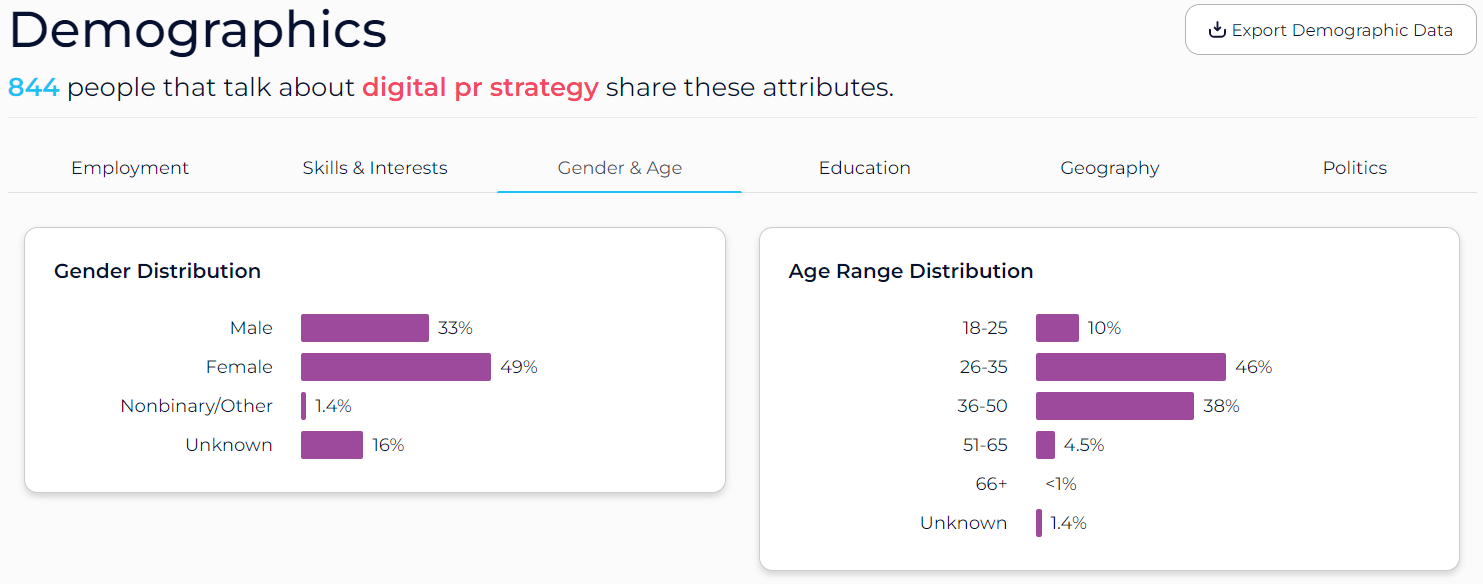 Screenshot from SparkToro, August 2022
Screenshot from SparkToro, August 2022
Beyond this, SparkToro provided me with data about my audience’s level of Education – whether they have an Associate’s degree, a Bachelor’s degree, a Master’s, a doctorate, or if their education is unknown – and their academic majors.
But demographics rarely tell the whole story. Fortunately, SparkToro also revealed this audience’s firmographics.
For example, 34% work in the marketing and advertising industry, while 31% work in public relations and communications. I can also see their years of experience in their respective fields.
In addition, 83% of this audience mentioned social media as one of their skills, 76% mentioned social media marketing, 74% mentioned marketing, and 73% mentioned public relations.
Finally, 17% of this audience use the word “agency” in their bio/profile/about fields on social platforms like Twitter, Instagram, Facebook, LinkedIn, etc.
And 11% use “digital PR,” 10% “marketing PR,” and 9.5% “communications.”
This gives me a clearer picture of who this target audience is.
And it works for other target audiences, too.
2. What Is Their News Search Intent?
Given the profile I’ve built of this target audience, they will likely know how to use Google News and Google’s other “news surfaces” to find press releases, images, and videos from some of the companies and organizations that matter to them.
And based on the keyword research and audience research that I’ve conducted, their news search intent is often different from their web search intent.
For example, if you use Google Trends to explore a search term or a topic like “digital PR strategy,” you’ll see sporadic interest in the US over the past 12 months.
But, if you click on the web search tab and select news search instead, you’ll see, “Hmm, your search doesn’t have enough data to show here.”
So, what’s the alternative?
Go to Google News and start typing the same search term or topic.
Google’s autocomplete feature will generate predictions that help people save time by allowing them to quickly complete the search they already intended to do.
As you will see from the image below, people not only search for “digital PR strategy,” but they also search for “digital PR strategy template” because they haven’t learned that they need a framework instead.
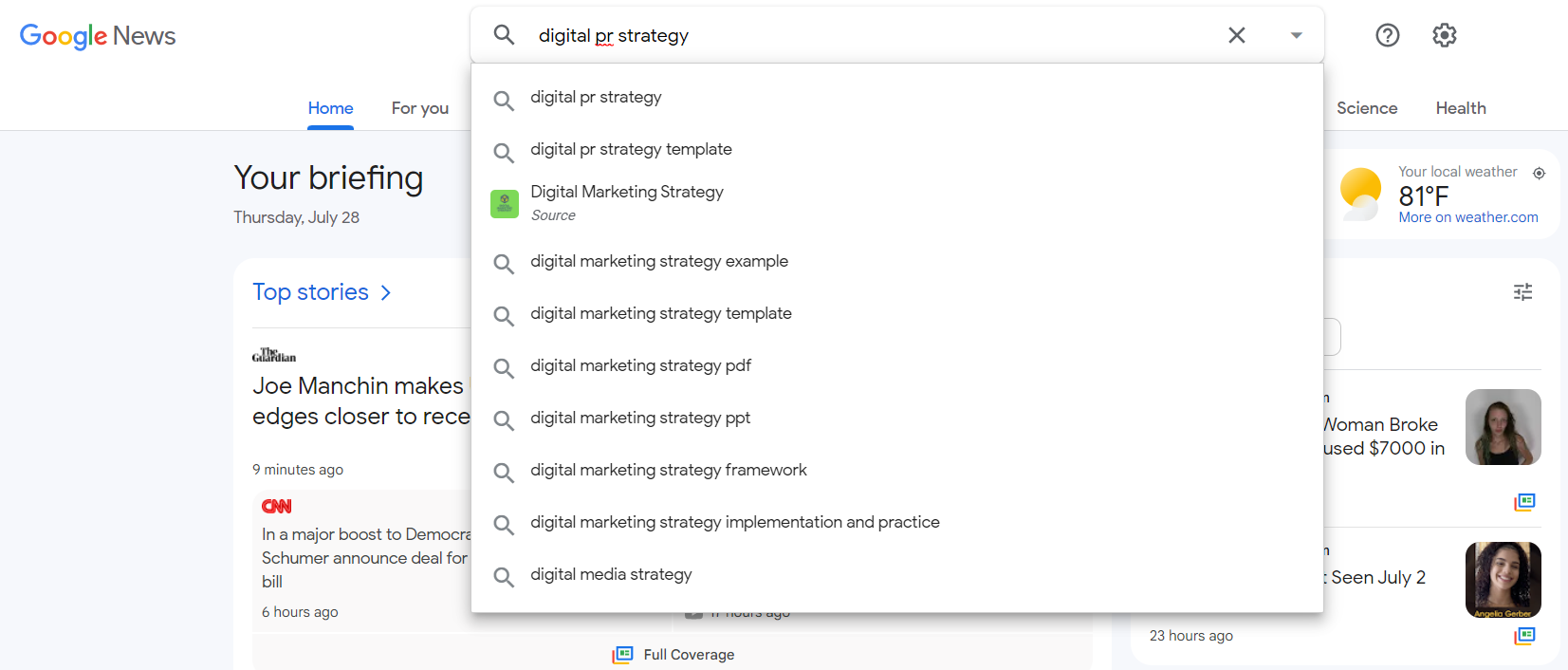 Screenshot from search for [digital pr strategy], Google, August 2022
Screenshot from search for [digital pr strategy], Google, August 2022
But, it’s worth noting that many of autocomplete’s predictions are for variations of “digital marketing strategy.”
Why?
Because many educated and experienced users of Google News have discovered over time that there’s a dearth of relevant news or interesting stories about the topic of “digital PR strategy.”
So, they’ve learned to broaden their searches instead.
You can also use SparkToro to see a similar phenomenon.
Although the tool identified 844 people who frequently talk about “digital PR strategy,” when you examine the top hashtags that they’ve used on platforms like Twitter, Instagram, and Facebook over the past three to four months, they are #digitalmarketing, #contentmarketing, #advertising, #branding, and #socialmediamarketing.
And the most frequently used phrases they used were “marketing strategy,” “influencer marketing,” “account manager,” “customer service,” and “marketing trends.”
 Screenshot from SparkToro, August 2022
Screenshot from SparkToro, August 2022
So, you often need to go beyond what the keyword research tools can tell you when determining your target audiences’ news search intent.
Sometimes, you might go broader.
But, other times, you might want to remind yourself that 15% of searches conducted every day are ones Google hasn’t seen before.
Where do these brand-new search terms come from? Breaking news, most likely.
3. When Do They Conduct News Searches?
The next step in creating a kickass digital PR campaign is learning when your target audiences are more likely to conduct news searches.
One strategy is called “newsjacking.”
David Meerman Scott coined the term in 2011, and the Oxford Dictionaries shortlisted it as one of their “Words of the Year” in 2017.
“Newsjacking is the art and science of injecting your ideas into a breaking news story so you and your ideas get noticed.”
He adds,
“When there is news in your marketplace reporters and analysts are looking for experts to comment on the story. Newsjacking gets you media attention.”
If you want more information about this digital PR strategy and examples of how to strike at the right time, read Scott’s book, “Newsjacking.”
He explains when a digital PR strategist should newsjack, and why this strategy favors players who are observant, quick to react, and skilled at communicating.
Or, if you want a quick preview, watch this short video from his publisher, Wiley.
[embedded content]
Another strategy is to leverage the seasonal calendar that many retailers use to plan for the year ahead.
A typical seasonal calendar for U.K. retailers includes:
- Valentine’s Day.
- Mother’s Day.
- Father’s Day.
- Summer Sales.
- Back to School.
- Black Friday.
- Holiday Season.
Or, you can create your own tentpole event to promote the launch of a new product.
Traditionally, tentpole events were used by movie studios to promote their big blockbusters each year.
But in July 1987, the Discovery Channel borrowed the concept to promote “Shark Week.”
My favorite campaign was: “Shark Week 2013 Promo – Snuffy the Seal.”
[embedded content]
4. Where Do They Conduct News Searches?
In the early days of what was then called “online PR,” the primary place where target audiences could find your press release was Google News.
Today, Google has several different “news surfaces,” including Google News, News in Google Search, Discover, News on YouTube, and News on Google Assistant.
If you want to learn how to optimize your news for each of these surfaces, then read Google News Optimization: How to Boost Your Site’s Visibility & Traffic.
But, when planning your next digital PR campaign, it’s wise to broaden your perspective.
For example, SparkToro reveals that 52% of the people who talk about “digital PR strategy” are located in the U.S. It also breaks down where in the world the other 48% are located.
If you’re planning to drive attendance to one or more in-person events, you should leverage SparkToro’s audience research to see where they’re located.
And you shouldn’t forget the press.
SparkToro discloses which press accounts this audience reads, YouTube channels they watch, and podcasts they listen to.
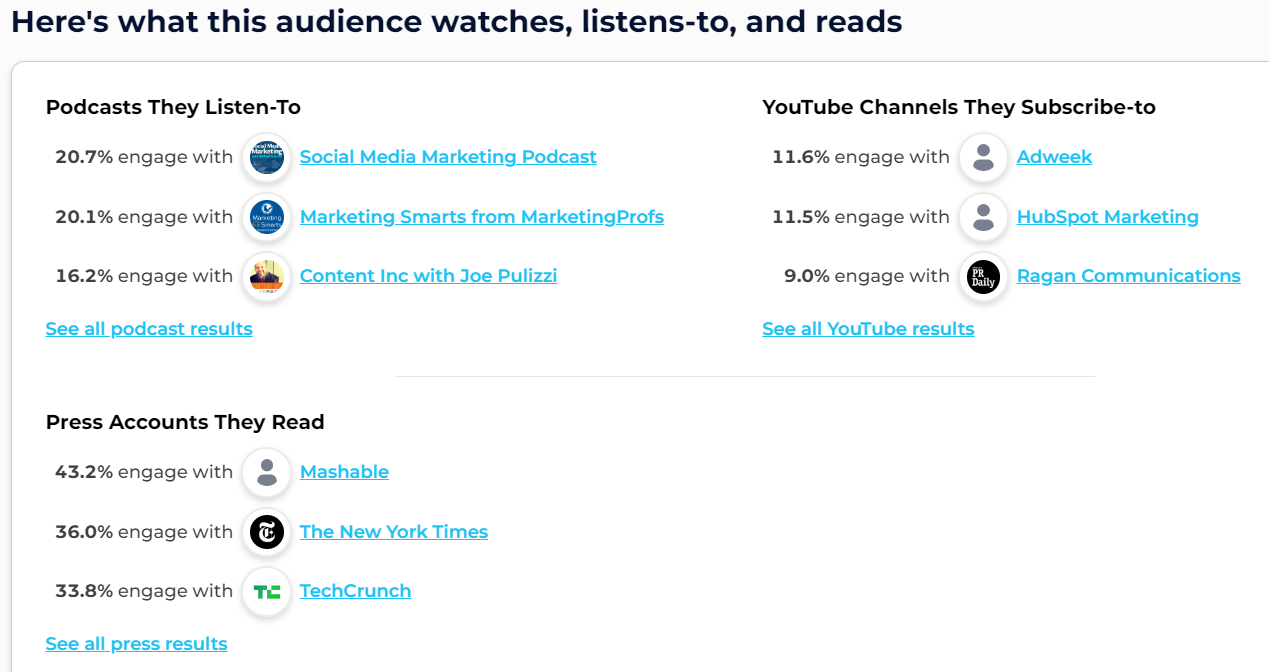 Screenshot from SparkToro, August 2022
Screenshot from SparkToro, August 2022
The tool also identifies the social accounts they follow and engage with most and the websites they visit frequently.
It often makes sense to pitch your story – under a news or press embargo – to these journalists, social media influencers, and other key opinion leaders – before distributing your optimized press release.
Why?
Because many of these news sources will honor the embargo to receive advanced knowledge of details and can prepare their reports to coincide with the announcement date and yet still “scoop” their competition.
5. Why Does Your News Matter To Your Target Audiences?
The next question you should ask is: “Why would my news matter to my target audiences?”
In other words, is your subject line or headline newsworthy enough to get their attention, and is your pitch or story compelling enough to get them to respond?
In far too many cases, they aren’t – which explains why so few digital PR campaigns generate kickass results.
In fact, the Propel Media Barometer for Q2 2022 analyzed a sample of nearly 400,000 real pitches to figure out what makes up the “perfect” pitch today.
They found journalists open less than 36% of the PR pitches they receive. And, the press only responds to about 3 out of every 100 pitches they receive.
Although similar data isn’t available to the public, it seems reasonable to assume that your customers click on just a fraction of the headlines they find in news search results and respond to only a small percentage of the stories they read.
So, you may need to conduct some tests to better understand why your news matters to your target audiences.
For example, we teamed up with Get City Dealz and Business Wire in 2013 for such a test.
We wanted to see which would generate better results for three local merchants promoting their best daily deals in New Orleans: an online video news release, a photo press release, or a release without multimedia.
The release with a video had 55.4% more release views and 36.1% more link clicks, and the release with a photo had 4.6% more release views and 7.1% more link clicks than the release with no multimedia.
That won us the award for the “Best Use of PR in a Search Campaign” at the inaugural U.S. Search Awards, as well as the “SNCR Excellence in New Communications Award” in the Visual Media Category of the Corporate Division for our “solid campaign with impressive metrics and accurate attribution.”
But, we could generate kickass results because the target audiences for all three press releases were more than 1 million tourists and 5,000 media members converging on New Orleans for two major events: the “Big Game” and Mardi Gras.
[embedded content]
We used Google’s Campaign URL Builder to add campaign parameters to URLs in the three releases, so we could measure our Custom Campaigns in Google Analytics.
That enabled us to see a 407% increase in organic search traffic in February over January.
We also saw an 85% increase in referral traffic in February over January – coming from news sites like Yahoo! Finance, Reuters, and social media like Facebook and Pinterest.
Plus, we distributed the releases on successive Saturdays, and the number of unique visitors to GetCityDealz.com on weekends doubled in February over January.
The online video news release for Jazzy Nola featured some unique wine tumblers made in a distinctly New Orleans style with a gold fleur-de-lis imprinted on the tumbler.
The release helped sell out wine tumblers, which were great for tourists and visitors wandering the French Quarter during “The Big Game” or on the Mardi Gras parade route.
The online video news release also mentioned that Jazzy Nola was promoting their Roger Goodell (Commissioner of the National Football League) voodoo dolls.
At the press conference before “The Big Game,” the media asked Goodell about the voodoo dolls, and he joked that he’d read about them. They also sold out in a matter of days.
Who, what, when, and where often influence why your news matters to your target audiences.
6. In What Way Can You Change Hearts, Minds, And Actions?
In ”Nicomachean Ethics,” Aristotle said we must act voluntarily to be held morally responsible.
Today, your target audiences feel and think they’re in control of what they do.
For example, SparkToro shows us all accounts share stories from media sources and news websites with high levels of factual reporting, the credibility of information, and the consistency with which their content passes fact checks.
The people who talk about “digital PR strategy” have even higher levels.
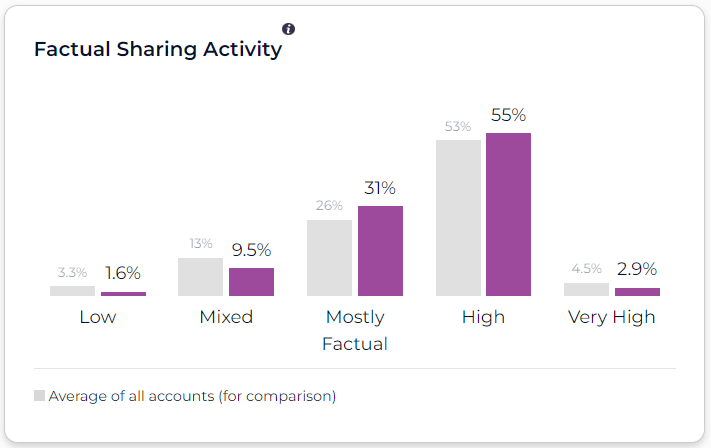 Screenshot from SparkToro, August 2022
Screenshot from SparkToro, August 2022
So, how can you ethically change their hearts, minds, and actions?
Start by reading What Is a Content Marketing Matrix & Do We Need One?
It explains that a content marketing matrix is a planning tool.
Below is one that I crafted and contributed to Guy Kawasaki, who included it in his book, “Enchantment: The Art of Changing Hearts, Minds, and Actions.”
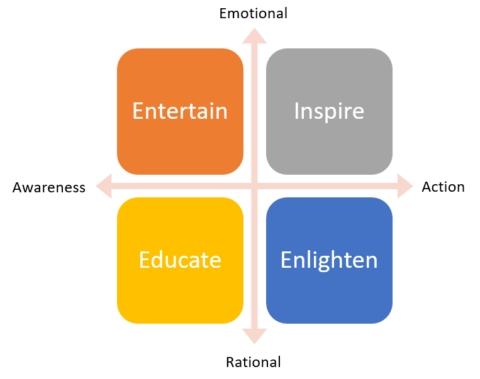 Image created by author, August 2022
Image created by author, August 2022
As you can see, this Content Marketing Matrix had only two dimensions:
- Awareness to action on the horizontal axis.
- Rational to emotional on the vertical axis.
And a digital PR strategist can use one to create news content that will enchant the press and the public.
Just use one of the four quadrants – educate, entertain, enlighten, and inspire – as a starting point for deciding if your content will enchant the press based on their beats and the public based on their interests.
Now, this is a big idea. According to Kawasaki,
“Enchantment is not about manipulating people…. And when done right, it’s more powerful than traditional persuasion, influence, or marketing techniques.”
He adds,
“In business and personal interactions, your goal is not merely to get what you want but to bring about a voluntary, enduring, and delightful change in other people.
By enlisting their own goals and desires, by being likable and trustworthy, and by framing a cause that others can embrace, you can change hearts, minds, and actions.”
For example: In cooperation with the Ministry of Economy and various entities concerned with tourism, culture, and heritage, the UAE Government Media Office launched the World’s Coolest Winter campaign in December 2020.
They distributed a press release to educate the press and the public about the country’s first domestic tourism campaign, which highlighted the wide variety of destinations in the Emirates worth visiting – to offset the dramatic drop in international tourists due to the global pandemic.
As part of the campaign, the New Media Academy teamed up in January 2021 with Beautiful Destinations to create “Let’s Go – The Emirates.”
The goal was to enlighten the public about the UAE’s hidden gems with beautiful cinematic videos, so they would take action.
[embedded content]
I should disclose that I’m an instructor at the New Media Academy, and five of my students are featured in this video.
The second season of the World’s Coolest Winter campaign was launched in December 2021.
It expanded on the previous year’s campaign by targeting both domestic and foreign tourists.
The second year’s campaign invited citizens and visitors to share their most beautiful experiences, adventures, and memorable moments across digital platforms in various parts of the Emirates.
The campaign also asked influencers to create inspiring photo and video content like “A Winter Through My Eyes” to inspire tourists to take action.
[embedded content]
The video’s description asks,
“Can a country be truly enjoyed by someone who cannot see? As the United Arab Emirates, we believe in making what seems impossible, possible. And this winter, we gave a young child, Clara, the opportunity to experience and enjoy the World’s Coolest Winter in the UAE.”
That’s how you can change hearts, minds, and actions in an ethical way.
7. By What Means Can You Measure Your Results?
Aristotle also wanted ethical people to understand by what means or how they achieved their ends. And today, measurement is so much more than counting.
As Katie Delahaye Paine says in her book “Measure What Matters,”:
“Counting just adds things up and gets a total. Measurement takes those totals, analyzes what they mean, and uses that meaning to improve business practices.”
She adds,
“Measurement of your processes and results … provides the data necessary to make sound decisions. It helps you set priorities, allocate resources, and make choices.
Without it, hunches and gut feelings prevail. Without it, mistakes get made and no one learns from them.”
For example, the first “World’s Coolest Winter” campaign generated:
- More than 2,000 media reports reached over 20 million people across the world.
- 215 million views of videos that captured UAE’s beauty.
- 950,000 domestic tourists in 45 days.
- 66% hotel occupancy rate vs. 58% in the U.S.
- AED1 billion (US$272 million) of revenue for the UAE’s hospitality sector.
So, the UAE Government Media Office went far beyond counting the number of stories that mentioned their campaign.
They worked with hotels in the country to measure revenue per available room (REVPAR).
(REVPAR is calculated by multiplying a hotel’s average daily room rate by its occupancy rate.)
After analyzing these business outcomes instead of their PR outputs, the second “World’s Coolest Winter” campaign generated:
- 71,000 photos and videos on social media.
- 3 million tourists, up 36% from the year before.
- A hotel occupancy rate of 73%, up from 66%.
- 5 billion (US$408 million) for UAE hotels, up 50% from the first campaign.
- Plus, US$11.5 million for a new initiative called “Warm Winter,” which extended humanitarian support to more than 110,000 refugees and people in need in Africa and the Arab world.
Now, that’s how you build a kickass campaign!
But, as I said earlier, there’s no digital PR strategy template.
You need to decide what really matters to your organization.
If you’re looking for metrics that you can use as KPIs (key performance indicators), then you should read:
Why? Because the last step in building a kickass campaign is measuring your results.
More resources:
Featured Image: gpointstudio/Shutterstock
